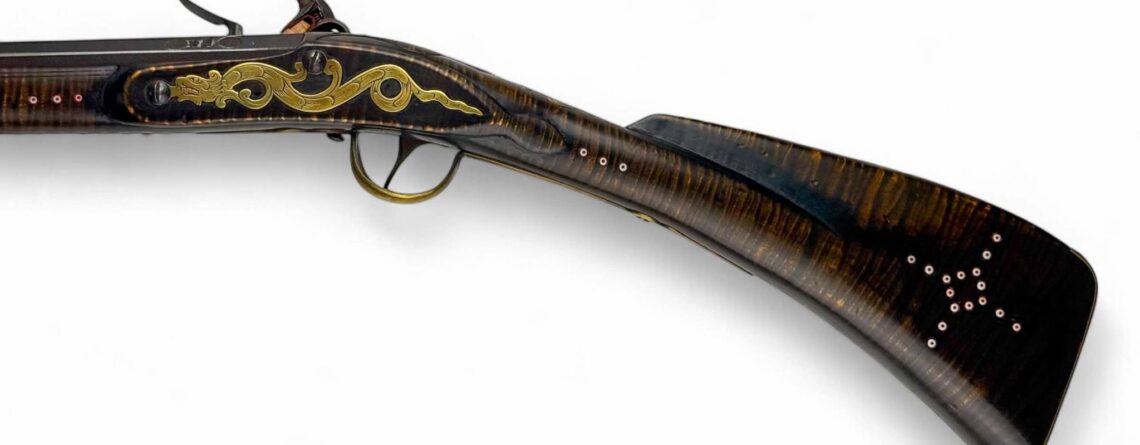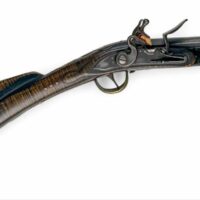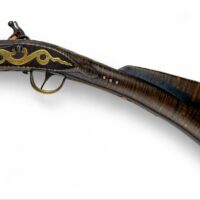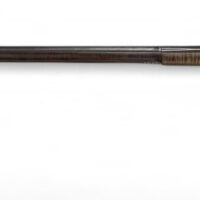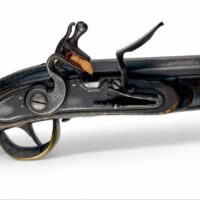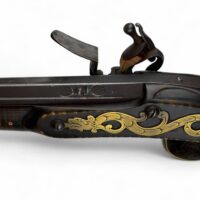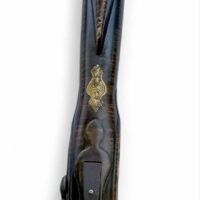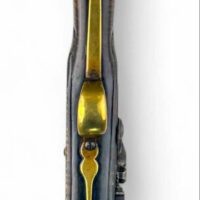Lot 30: American Stocked “Composite” or Parts Gun by: Robert Wolfe
For this project, I tried to imagine that sometime in the 1760s, a Native American gave a worn-out early English trade gun to a gun stocker and asked him to build a new gun. The lock was missing or beyond saving, so the gun stocker provided a Germanic lock. Once the stocker completed his work, the Native American added his own trade bead decoration.
For a stock pattern, I chose a parts gun from the collection of the Colonial Williamsburg Foundation shown in Of Sorts for Provincials (Jim Mullins, 2008). That gun, however, has no butt plate, side plate, and only a very simple iron strap for a trigger guard, while I chose to build my version with a full suite of handmade hardware. Engraved serpent side plates show up on many early trade guns. Relict butt plates with a serpentine return have been found at a few early native American sites in North America. I added the serpent’s head to the butt plate to match the side plate. There are two similar butt plates shown in Historic Arms of Early New York 1640 to 1850 (Wester White, 2022).
The trigger guard was made from sheet brass and is also similar to ones found at several Native American sites. The ribbed brass ramrod pipes typical of trade guns were handmade from sheet brass. The lock is German and higher quality than would have been found on a typical trade gun, so it would have been salvaged from another gun or purchased new. The 20-gauge barrel has English proof marks and is marked with my initials (RW), though they could also be those of Richard Wilson, a period maker. The front site is made from coin silver. Bead decoration is known from a small handful of surviving guns, though this gun does not follow any particular example. One well-known French trade gun has beads bedded in red sealing wax, and I have followed that here. The gun is stocked in beautifully striped maple stained with aquafortis and rubbed with several coats of oil varnish, followed by wax. It has been finished to represent an aged but well-loved family heirloom.
Barrel: Rice Barrel Company, 48” 20-gauge smoothbore
Lock: Jim Chambers Flintlocks, Early Germanic Flintlock
Stock wood: Harrison Gunstocks/Nathan Cox, curly maple
Engraving: Ian Pratt (butt plate and side plate), Ken Gahagan (wrist escutcheon)


